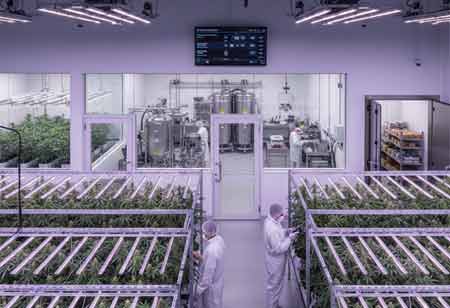Thank you for Subscribing to Cannabis Business Insights Weekly Brief
Effective Methods for Accelerating Cannabis Extraction Processes
Different cannabis extraction methods offer a range of products for consumers to make informed decisions and appreciate the complexity involved.

By
Cannabis Business Insights | Thursday, October 09, 2025
Stay ahead of the industry with exclusive feature stories on the top companies, expert insights and the latest news delivered straight to your inbox. Subscribe today.
Fremont, CA: Cannabis extraction is essential for creating the various products found in dispensaries today, such as oils, concentrates, edibles, and topicals. The main goal of these extraction methods is to isolate the active compounds in cannabis, including cannabinoids and terpenes while removing impurities from the plant material. This process often involves solvents like ethanol, butane, or propane, which extract the cannabinoids and terpenes. The method typically involves soaking the cannabis plant in ethanol, allowing the solvent to dissolve the active compounds within it.
Butane Hash Oil (BHO) extraction is a solvent-based method that involves dissolving desired compounds in the plant material, leaving impurities behind, and then purging the butane to produce a highly concentrated extract. BHO produces potent concentrates like shatter and wax, valued for their high cannabinoid content. However, handling butane is crucial due to its high volatility and the need for special equipment.
CO2 extraction is a rather intricate, highly regarded process using supercritical carbon dioxide to extract compounds from cannabis. The method involves carbon dioxide that is pressurized and heated to reach a state at which it demonstrates the properties of a gas and a liquid. This supercritical CO2 takes on the role of a solvent, dissolving cannabinoids and terpenes in the plant material selectively. CO2 extraction would be preferred because it effectively produces clean, high-quality extracts without any residual solvent. Complete control of the extraction process and the ability to create specified cannabinoid profiles and terpenes are other advantages of the CO2 extraction method. Although CO2 extraction has many benefits, the equipment is costly, and technical expertise is also needed.
It is a prevalent method for extracting cannabinoids and terpenes from plant material. Steam is passed through the material, vaporizing the compounds and re-condensing them into liquid. This is an extremely effective method for extracting terpenes, and it can be found in many cannabis essential oils and aromatherapy products, although yields may be somewhat lower.
Mechanical separations use heat and pressure to separate cannabinoids and terpenes from plant material. Heat and pressure are also used to apply rosin onto cannabis flowers or hash to produce a sticky, gummy concentrate. This technique is desired because it is straightforward and free from any involvement with solvents, yielding a pure product. It finds favor among consumers who prefer a natural, clean concentrate.






